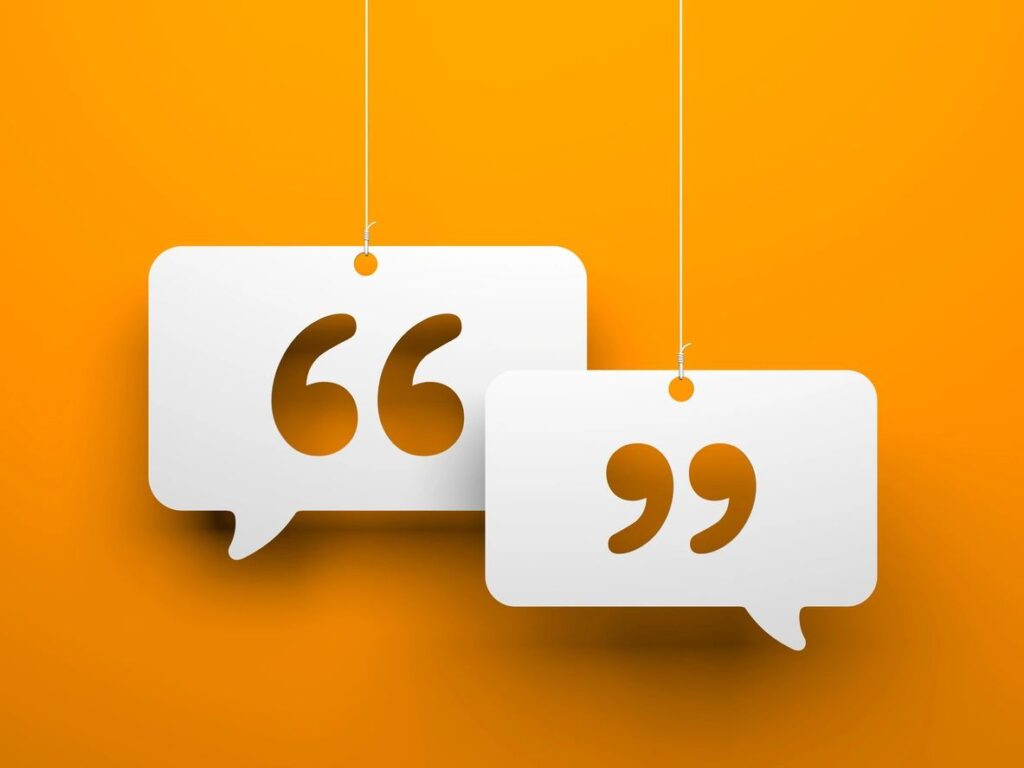
Dialogue is a key component of fiction, narrative nonfiction, and memoir writing. Done well, it captures the reader’s imagination and immerses them in the story. But there are common mistakes many writers make when writing dialogue – even though we all talk and listen every day. As a writing coach and book editor, I’ve seen most of them.
Mistake 1: Stilted dialogue
“You’re impossibly fast and strong. Your skin is pale white and ice cold. Your eyes change color, and sometimes you speak like—like you’re from a different time.” ~ Twilight, Stephanie Meyer
A forced plot, cliched characters, a genre-twisting confused tone. There are lots of reasons to make fun of Twilight – and a degree of success that could say those reasons don’t matter. The dialogue, though, is really bad. Bella doesn’t talk like any human I’ve ever met, despite being one of the few human protagonists in the book. The above is clunky, awkward, overstates the obvious, and repeats what the reader already knows.
The Fix: Read your dialogue out loud. Sound like something a real person would say? If not, use slang, incomplete sentences, and verb contractions – the way people actually talk.
Mistake 2: Expository dialogue
“I’m Robert Langdon, a professor of religious iconology at Harvard University,” Langdon said, offering his hand.
“I know who you are,” Vittoria said. “You wrote ‘The Symbology of Secret Sects.'”
“Yes, but I assure you, my field is the study of ancient symbols and rituals—”
“Okay, Professor,” Vittoria said. “You can give me your credentials later.”
~ Angels and Demons, Dan Brown
Expository dialogue burdens the characters with speechifying to convey plot points and backstory instead of a natural conversation that moves the plot forward. This is the very definition of telling (announcing things to the reader) vs showing.
The Fix: Make exposition – the stuff your reader needs to know – part of the action or description, and allow dialogue to reveal character instead of data.
Mistake 3: Overusing dialogue tags
“Good luck, Harry,” said Hermione, standing on tiptoe and kissing him on the cheek. “Oh, Harry, be careful!”
“You drink that,” said Ron, “you’ll be sick for a week.”
“Good luck, Harry,” said Neville.
~ Harry Potter and The Sorcerer’s Stone, J. K. Rowling
Dialogue tags identify who’s speaking: he said, she replied, they asked. Overused, they chop up dialogue flow.
The Fix: Use descriptions of characters’ action beats or body language instead: “‘Good luck, Harry.’ Hermione stood on tiptoe and kissed him on the cheek.”
Mistake 4: Too much description
“Wast thou addressing me, varlet?” demanded Grignr, twisting his mustached countenance into a scowl.
“Aye, thee I address, spawn of a pigdog,” the unperturbed wench replied, tucking a loose tendril of hair behind her pointed ear. “Do ye make a habit of spilling red gore over virgin tapestries and tile floors?”
~ The Eye of Argon, Jim Theis
Oof. The tortured faux-medieval English is bad enough. Here, clumsy adjectives slow this overwritten and artificial-sounding dialogue.
The Fix: more natural, stripped-down dialogue that doesn’t rely on lurid language to get the information across. Balance action and dialogue, and save description for when it’s necessary to set the scene or reveal character.
Mistake 5: No subtext
“I want you, Anastasia. I’ve wanted you since the moment I met you,” Christian said.
“Really?” Anastasia asked, surprised.
~ Fifty Shades of Grey, E. L. James
Why does he want her? Why is she surprised? There’s no context, no nuance, no deeper meaning. This dialogue is flat and uninteresting.
The Fix: consider all the layers of what your character is trying to say, as well as how they might be feeling. Use elements like body language, tone of voice, and other cues to reveal the subtext to the reader.
Don’t settle for uninspired dialogue when you could be crafting dialogue that’s nuanced, compelling, real. Whether you’re a seasoned writer or just starting out, a writing coach can provide the guidance and support you need to take your writing to the next level and create stories readers can’t put down.
Tags: book writing, writing coach